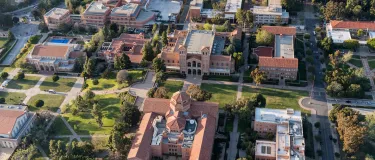Summary
Despite the steady decline of smoking rates in California, 224,000 children under age 12 live in homes where smoking is allowed, and another 742,000 live with an adult or adolescent smoker. This policy brief details significant differences in children's exposure to tobacco smoke and risk of exposure by race/ethnicity, geographic regions within the state and by poverty level. African-American children were found to have a significantly higher rate of exposure than other racial and ethnic groups, while children in the Northern/Sierra and San Joaquin Valley regions were at the highest risk of exposure to secondhand smoke. Children living in lower-income households were also at higher risk. These findings can aid strategies to decrease children's exposure to tobacco smoke in the home through targeted public health messages and outreach to those enrolled in public programs.
CORRECTION: [Nov. 2, 2011] A sample size miscalculation in the original version of this publication resulted in errors to the estimated number of children affected by secondhand smoke, although the percentages, interpretation and findings remain correct. The errors were related to pooling three cycles of California Health Interview Survey (CHIS) data. The Center regrets the error. A corrected version of the policy brief is attached here, as well as an updated version of the original press release. Specifically, the following numbers were revised: The total estimated number of children annually affected by secondhand smoke was revised from 2.5 million to 966,000. The total number of children estimated to be exposed to secondhand smoke in their homes each year was revised from 561,000 to 224,000. The total number of children estimated to live in homes where there is an adult or teen smoker in the household, but smoking is never allowed in the home, was revised from 1.9 million to 742,000. Race/ethnicity breakdowns changed from 180,616 to 60,800 for white children; 168,285 to 70,400 for Latino children; 121,126 to 41,200 for African American children; and, 49,016 to 21,300 for Asian children. The correct estimated number of children in the Los Angeles region is 1.7 million and not 4.5 million. All other numbers and percentages in the study remain correct.








